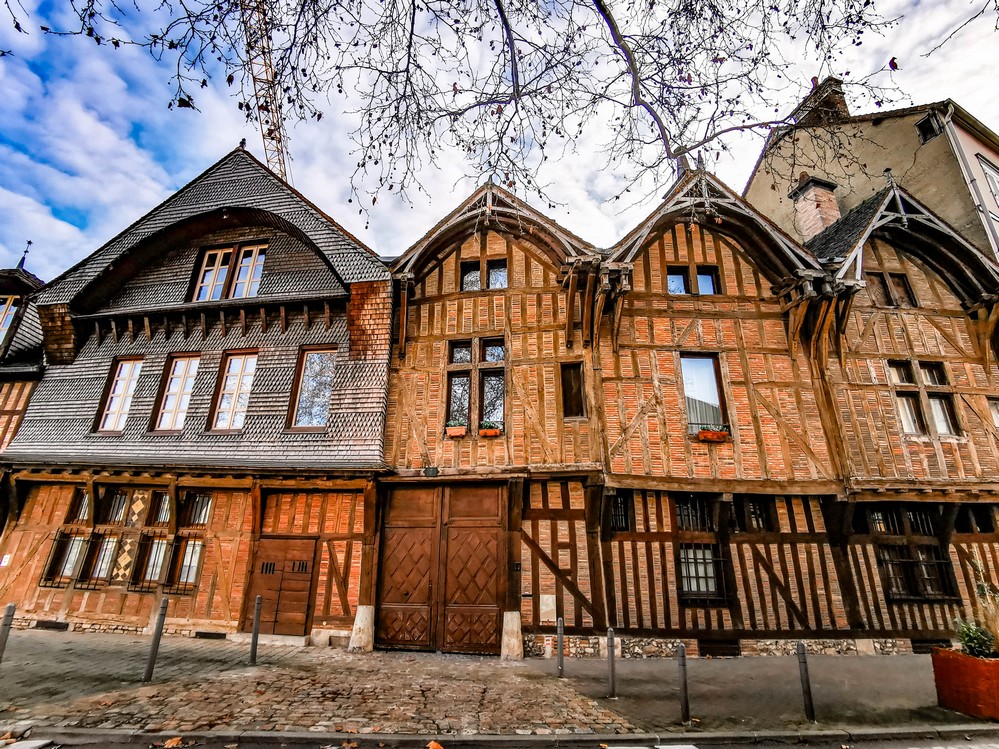Add to bookmark
Framed by the streets Paillot-de-Montabert, Charbonnet, Champeaux and the “ruelle des Chats” (“Cat Alley”), a Renaissance-style garden has been laid out at the back of the Juvénal-des-Ursins Hotel.
Combining intimacy and a sophisticated plant composition, this 500 m2 garden was designed by the City thanks to the sketch made by Éric Pallot, Chief Architect of Historic Monuments. The walls and trees of the garden are decorated with LED lightings. The species of trees, flowers and plants were chosen for their aesthetic interest but also for historic and ecological reasons, as they contribute to developing biodiversity in the heart of the city. The garden also enhances the beauty of the Juvénal-des-Ursins Hotel, a jewel of the “beautiful 16th century in Troyes” and creates a new urban breathing space.
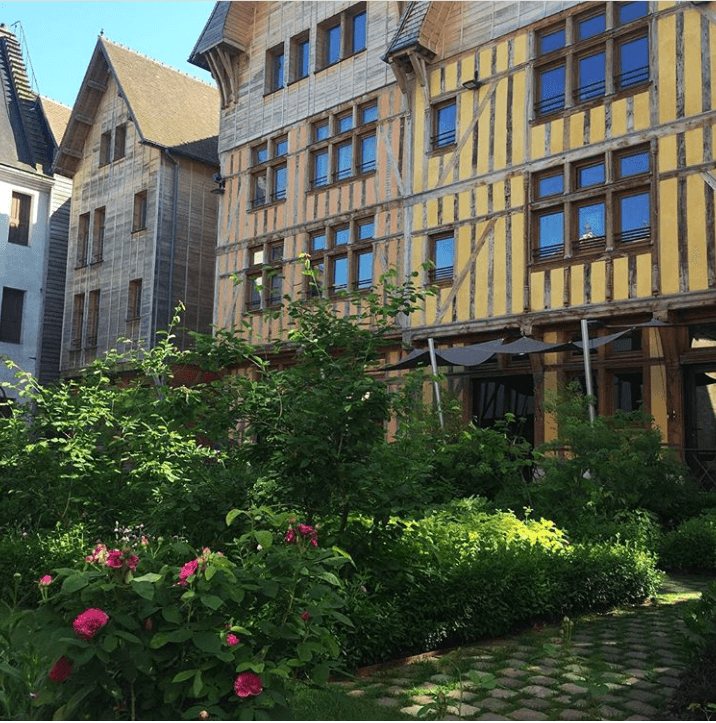
This street has been named “Cat Alley” because, apparently, cats can jump from a roof or attic to the opposite one as the houses are so close from each other. Props even prevent them from tipping over completely! In the 15th century, it was called “Ruelle Maillard”, but in the 19th century, people got so used to call it « ruelle des Chats » that it became its official name: “the roofs were contemplating each other from centuries, and therefore started to have sweet feelings for each other… Cats can now pass from one attic to the other with no risk of falling!”
The “Cat Alley” is paved in the old-fashioned way, as were the streets of Troyes from the 14th century onwards, with a central gutter to let waste water and filth drain away: the privileged people would stay at the top of the pavement to avoid getting dirty. Dark but charming, the alley leads to the very pretty courtyard of the “Mortier d’Or” (“golden mortar”), where you can see a good example of an interior courtyard, with its half-timbered houses, their beautiful galleries or passageways. The ends of the beams are sculpted with designs often inspired by war. The whole was restored in 1981 by the “Compagnons du Devoir”.
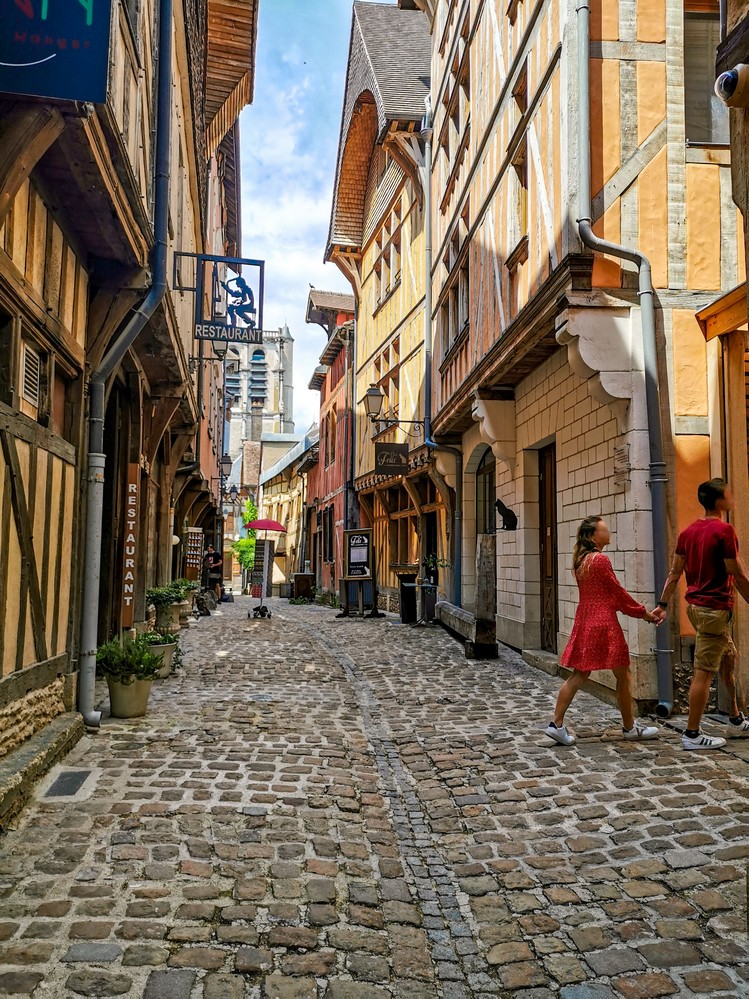
The scenography of the garden, of a medieval and liturgical style inspired by the Madeleine church, recalls the history of the place and displays a collection of mainly green and white plants, symbols of eternity, purity, and wisdom.
The Garden of the Innocents is located on a former cemetery next to Sainte-Madeleine church, the oldest church of Troyes (built in the 12th century). Part of this cemetery was reserved for the burial of stillborn children, hence the name “Garden of the Innocents”. It invites the public to appreciate the hidden part of the church while discovering the remains of a funeral gallery vaulted with pointed arches. The site offers an extension of the garden, so people can discover the flora differently and observe through openings areas of natural biodiversity.
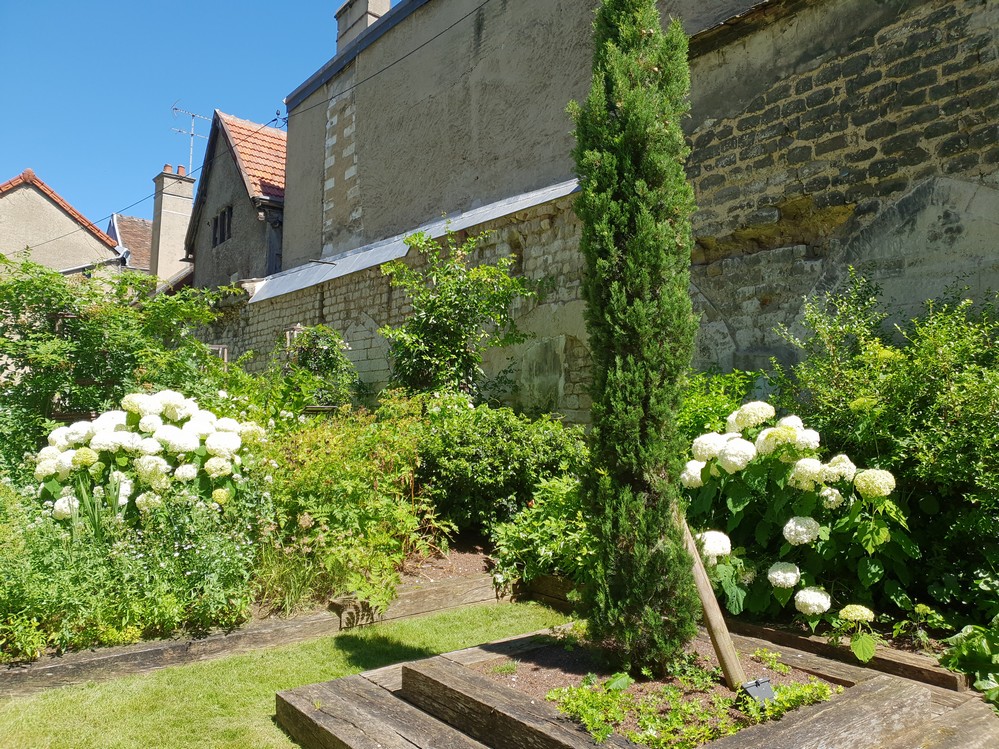
This garden was built in 1860 in the ditches along the old city fortifications. It is a romantic garden in which you can discover different spaces through the pathways. Its waterfall and stream are ideal for a stroll.
The garden is hilly and isolated from the surrounded boulevards and is also of botanical interest.
It is accessible to people with disabilities and animals are welcome on a lead.
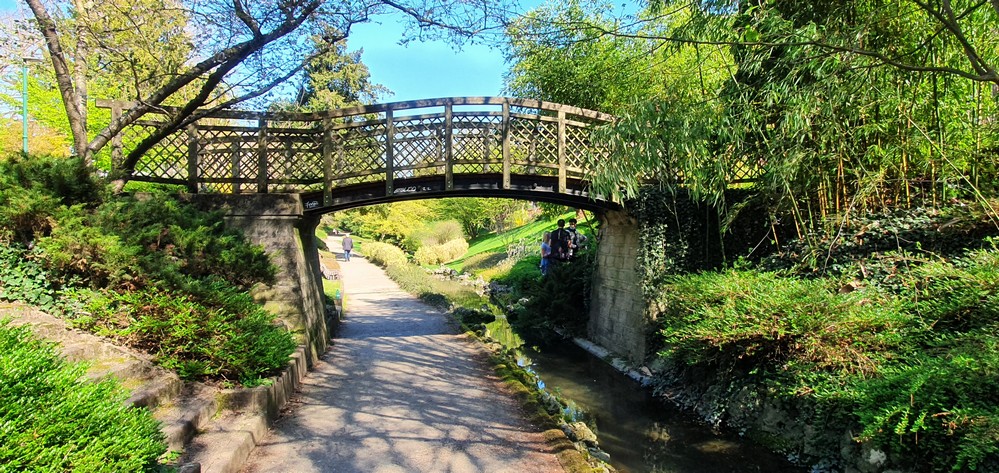
On the corner of this street, a charming house built in the beginning of the 20th century has many beams and balconies and a wrought gable. Until March 1992, it housed the Montaulin tax office. It was restored a few years ago and has now a pretty olive green on its wooden sides.
After almost disappearing, this incredible collection of half-timbered houses inherited from the Renaissance is now the pride of the Champagne town. Its picturesque and colourful style also tells the story of the metamorphosis of a city, some chapters of which have yet to be written.
Anyone walking through the streets of Troyes feels amazed of the large numbers of half-timbered houses. The city has without a doubt one of the most beautiful and richest collection of half-timbered houses, characterized by vertical, horizontal, and oblique stripes revealing the skeleton of the building. This structure is also known as “timber frame”.
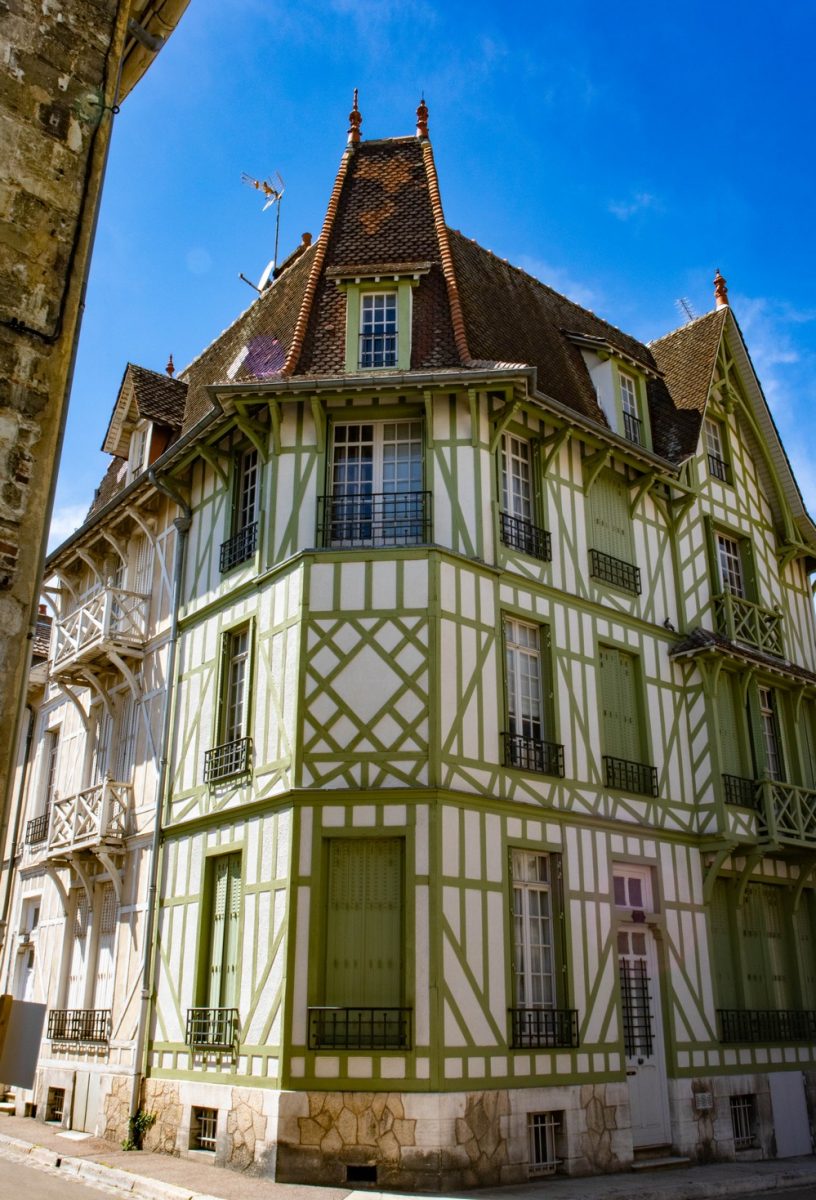
The House of Tools and Workers’ Philosophy (Maison de l’Outil et de la Pensée Ouvrière) present a unique collection of 12,000 hand tools from the 17th, 18th, and 19th centuries, displayed beautifully in 65 showcases. It also houses a library and a specialist bookshop.
The imposing showcases are mainly organised around the type of crafts, the museum being divided into 4 families: wood, iron, animal and mineral. The tools have been carefully selected to become the heritage of the life of men, of mastery and culture.
In a society where the “manual” jobs are not always seen positively in the collective unconscious, the House of Tools and Workers’ Philosophy is a real mean of transmission of all these precious skills.
For the visitor, it is essential to observe these tools, not to discover their function but to see the hand, the heart and spirit of their owners. They demonstrate the passion of these men and women and the poetry developed through the crafts.
The Mauroy hotel is a wonderful place to visit for anyone, and it also offers exhibitions and cultural events in collaboration with the House of Tools and Workers’ Philosophy.
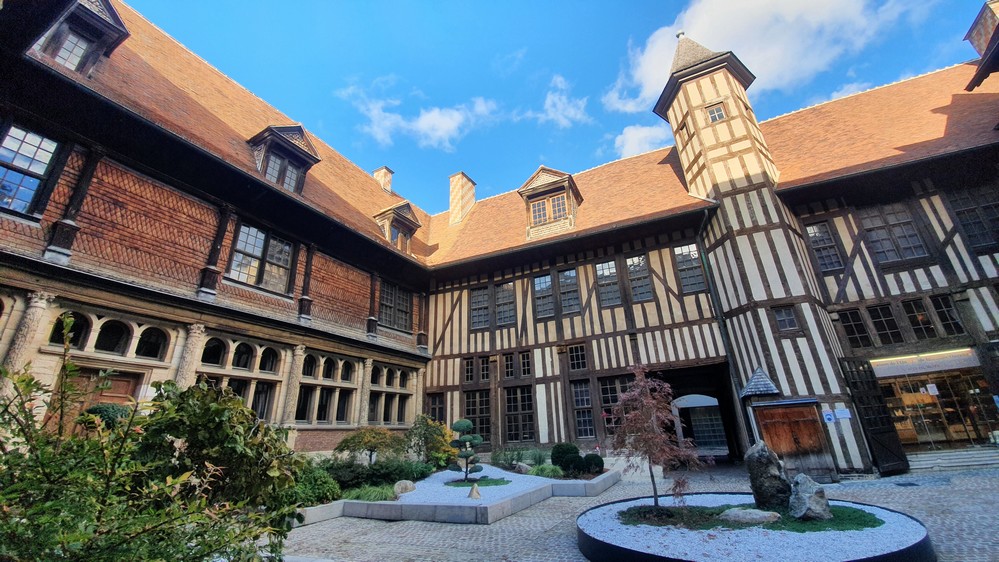
This sculpture is known as “Lili with a hat” and was made by a Hungarian artist, Andras Lapis, whose favourite theme seems to be ladies with hats. There is a similar sculpture near the Hungarian Institute in Paris. In Troyes, our Lili is sitting on a bench and read a book about the Counts of Champagne. She is made of bronze and 1.25 m high. She has become an unmissable stop for photographers visiting Troyes.
Every day, people stop by to declare their love to Lili. They come and sit shily next to this delicate young woman with wandering thoughts. A quick pose for a photo, and it is already time to leave the beautiful reader to her dreams and to her bench.
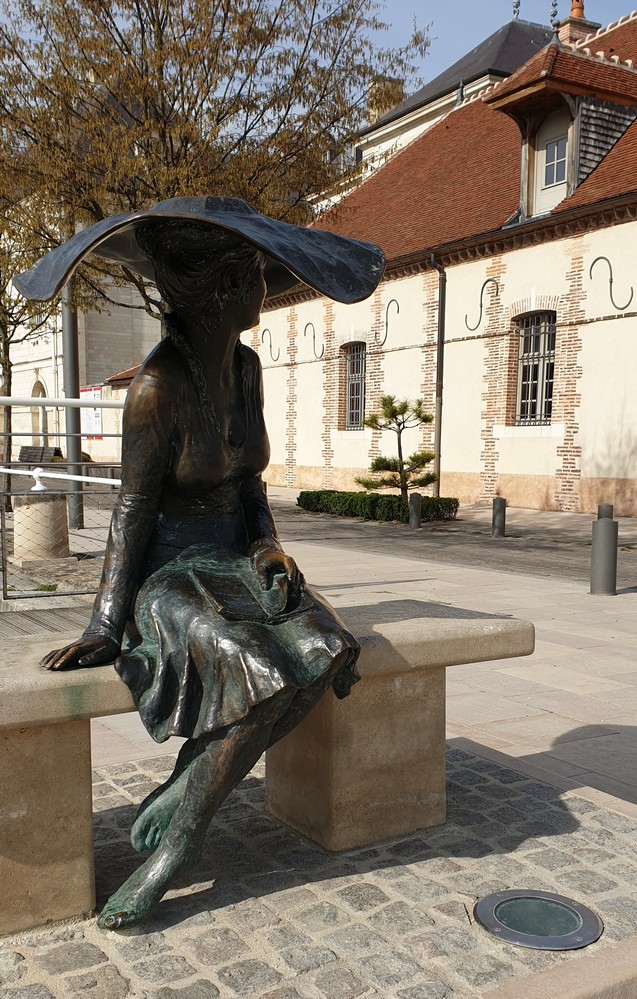
To stroll along the quays, take a selfie with Lili, put your bike down and sit on a bench… The brand new quays of the Counts of Champagne warmly invite inhabitants and visitors to have a nice break.
In 2011, the canal was breathing again as the concrete cover that hid it was removed. Today, Troyes has found the water that gave birth to the city, and made its building and development possible. Now it offers a pleasant and natural living environment in the heart of the city centre. The quays of the Counts of Champagne are partly pedestrian and cycle-friendly and offers walks under the sun until late afternoon.
The renovation of the quays of the Seine restored a real living space where people can enjoy and meet up. It erases the border made by the continuity of Chomedey-de-Maisonneuve and Georges-Vanier avenues, and it reduces the road traffic of cars driving from one side of the “champagne cork” to the other without stopping.
This renovation has restored a legitimate historical value to the water in our city, and has marked the hyper-centre by reconnecting the head and body of the “champagne cork”.
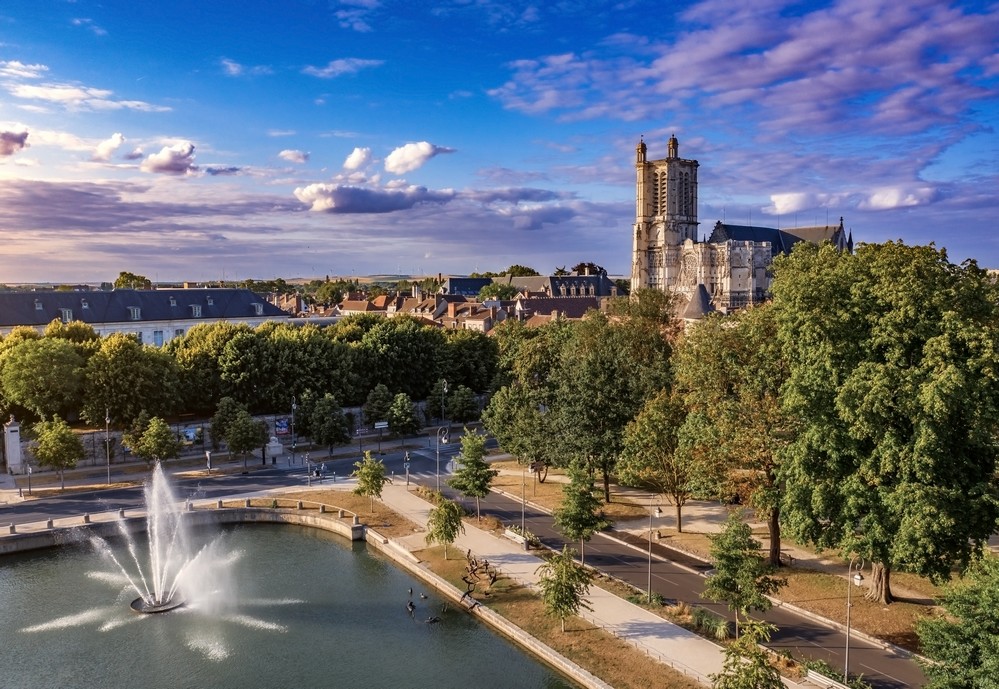
Saint-Pierre Saint-Paul Cathedral: built over more than 400 years, the cathedral illustrates the different stages of the Gothic, classical, radiant and flamboyant architectural styles, but the building is still very homogeneous and beautiful both from the outside and inside. It is 114 m long and 29,50 m high, and one of the most famous cathedrals in France, particularly for its listed stained-glass windows on 1 500 m2, its elegant style, its quality sculptures, paintings and tapestries. The Saint-Paul tower was never built because of a crisis of faith and a lack of funding. In the choir, 13th century stained-glass windows depict Mary, Saint John and various episodes from the Bible. In the nave, a Tree of Jesse (± 1500) can be admired, and in the north aisle of the nave, the Mystic Press (1625) made by Linard Gonthier, a famous master glass artist from Troyes (1565-1642). The choir stalls, made in sculpted wood in the 18th century, come from the Clairvaux abbey, as well as the famous great organ, also built in the 18th century. The cathedral holds a remarkable treasure, built up from 1204 (during the sacking of Constantinople by the Crusaders), including an exceptional collection of shrines (with the head of Saint Bernard de Clairvaux). In 1420, in this cathedral, the “shameful Treaty of Troyes” was claimed, giving the crown of France to Henri V of England. On the 10th of July 1429, in this same square, Joan of Arc obtained the allegiance of the city to the young Charles VII to “drive the English out of France”, as it is indicated on a plaque at the bottom of the tower.
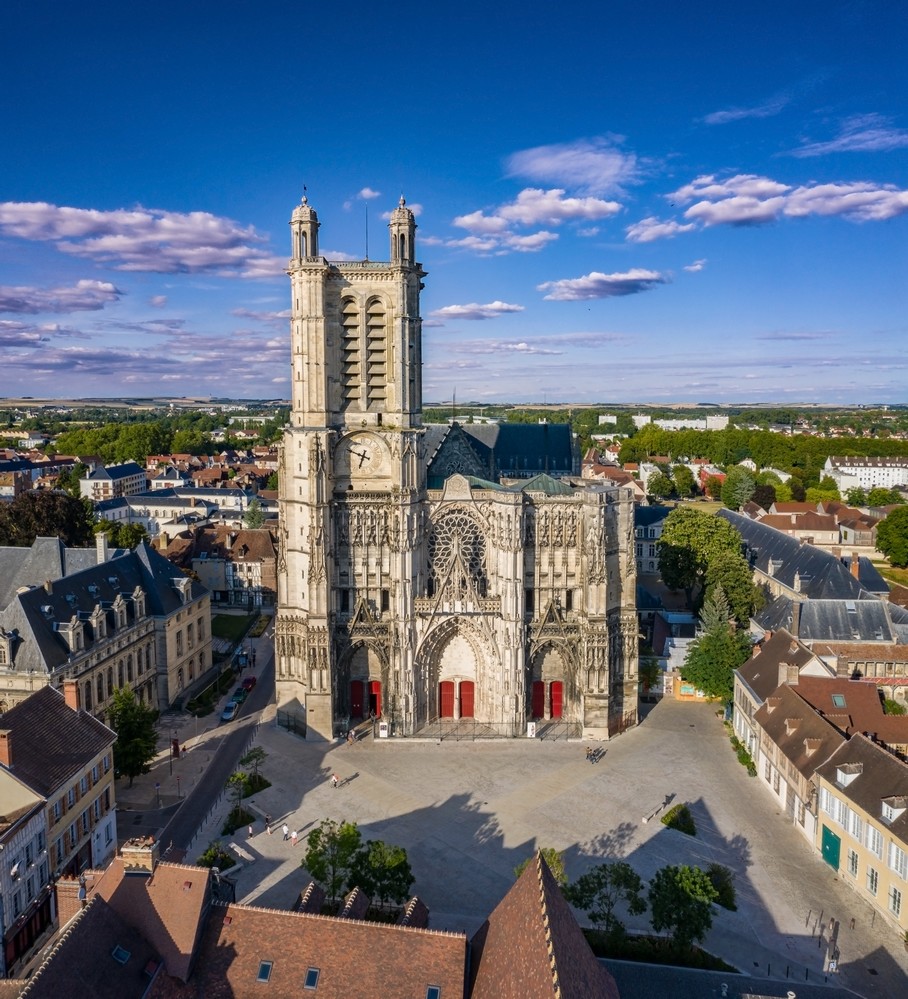
This square was named under a former hotel known as the “Trois-Godets” (3 small pots).
Peaceful and shady, it is an ideal spot to admire the cathedral and the colourful half-timbered houses mainly built in the 17th century.
Under the facade of one of these houses, on the square side, you can see an arch that spans the old Meldançon stream. This ancient stream bordered the first city wall. When the city expanded in the 10th century, a new wall was built beyond the current Saint-Nizier church (on Surgale and Célestin-Philbois streets). This house is still called the “Pont-Ferré” house (“steel bridge house”), because until 1530, the bishop collected a toll on the shoes of the horses passing through the Ursins gate (located at the entrance of the Cité street when you come from Saint-Nizier).
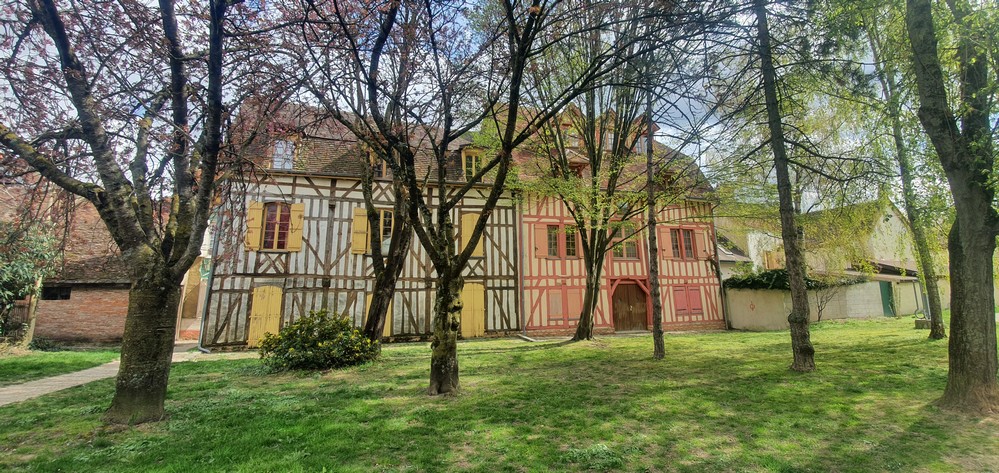
The Heart of Troyes (Coeur de Troyes) was designed by the local artists Michèle et Thierry Kayo-Houël. It is the centrepiece of the renovation of the quays of the Haute Seine canal. Made by the Sotralinox workshop, this stainless-steel lacework is composed of more than 200 pieces assembled together, weighing one and a half tonnes, 4 m wide, 3.5 m high and 2 m deep. At nightfall, dressed in red lights, the Heart lights up and a camera with a computer program animates the light beats as the spectators more forward: it is a beating heart! Set in the middle of the “cork”, between its body and head, this heart symbolises the romanticism of the historic city.
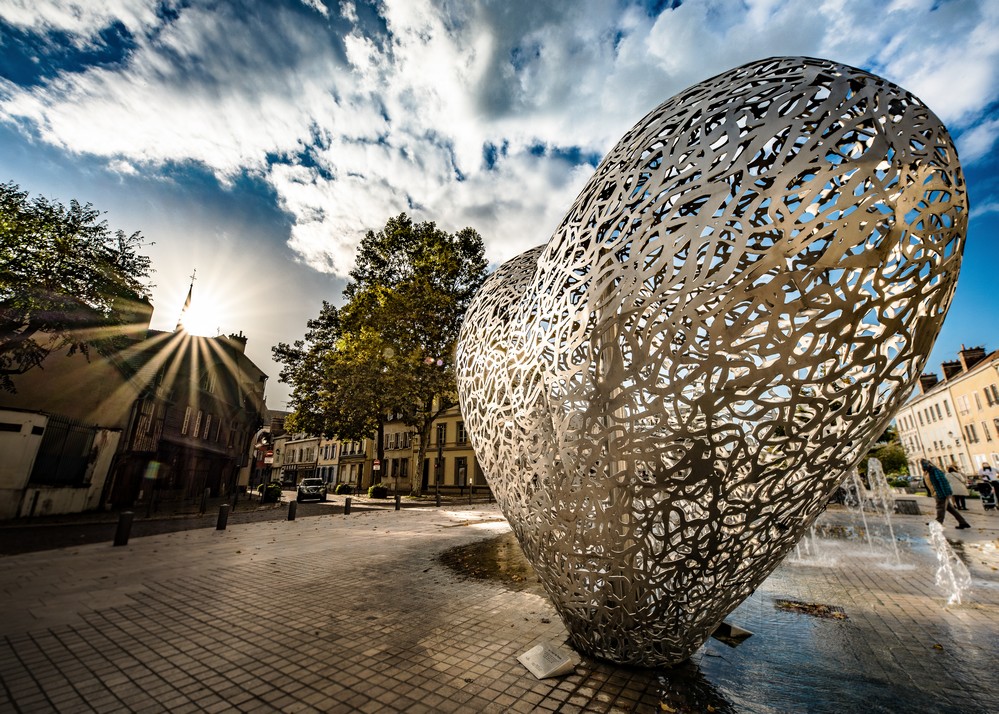
The semi-detached houses of this street were restored in 1978 with an innovative restoration technique combining timber framing with brickwork.
In the past, the filling material was traditionally cob, a mixture of straw and clay, to which cow or horse hair, or even dung, was added.
One of the houses in Passerat street is also remarkable for its facade covered with wooden tiles (little boards or shingles) which protect it from bad weather.
